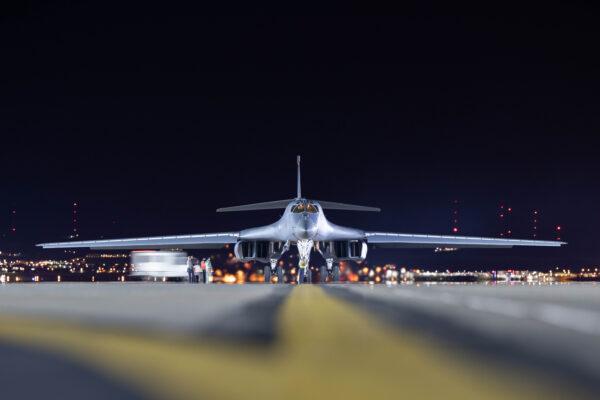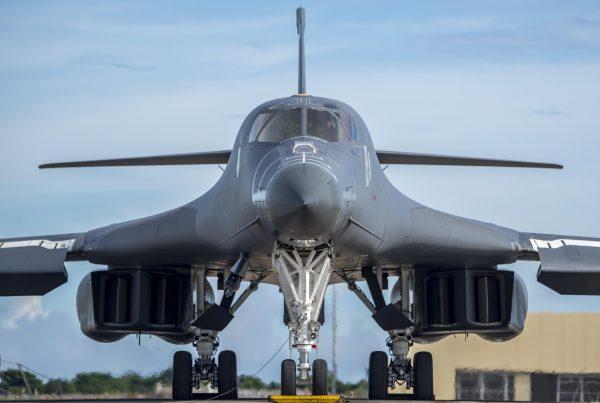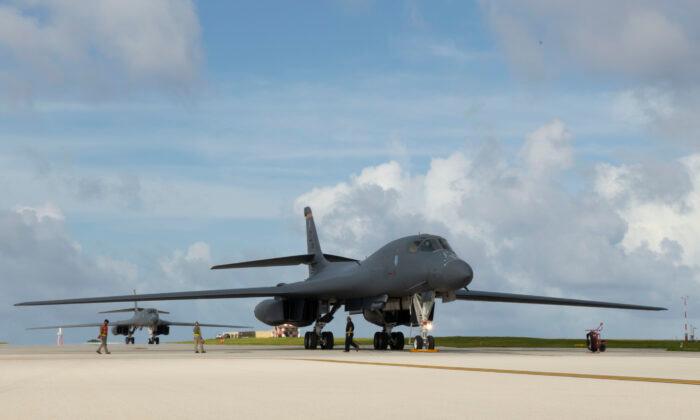Several of America’s heaviest lifting bombers, the B-1 lancers, have headed back to the strategically located island of Guam in the Pacific along with over 150 airmen, as the Air Force continues testing out its new Bomber Task Force approach, designed to keep adversaries on their toes.
The return of the B-1 bombers to the island, which lies in what military strategists call the “second island chain” out from China, also comes as the geopolitical spotlight falls on the South China Sea.
Guam has been without a permanent bomber presence since April for the first time in 16 years. Instead of being stationed on the island, where they lie in reach of China’s so-called “Guam-killer” D-26 missiles, U.S. bombers are instead flying into the region directly from bases in the United States, such as in South Dakota.
The strategy did not rule out bombers returning to be stationed on Guam from time to time. It just introduced greater unpredictability and flexibility.

According to the Air Force, the mission was to support training efforts with allies, partners, and joint forces, and also to provide “strategic deterrence missions to reinforce the rules-based international order in the region.”
That last rationale echoes recent statements made by the Navy as it carries out exercises in the South China Sea.
“Our team has been actively preparing for BTF operations to ensure we’re ready and capable of meeting any requirement across the globe,” said Lt. Col. Lincoln Coleman, 37th EBS commander. “We are excited for the opportunity to integrate with our partners and allies in the Pacific theater and increase our joint lethality.”
“With the largest conventional payload of both guided and unguided weapons in the Air Force inventory, the multi-mission B-1 is the backbone of America’s long-range bomber force,” said the Air Force statement. “It can rapidly deliver massive quantities of precision and non-precision weapons against any adversary, anywhere in the world, at any time.”

In the past few months, the Air Force has been sending bombers from the mainland United States to both Europe and the Pacific on bomber task force missions to demonstrate a new strategy known as dynamic force employment.
The new strategy, created in response to the National Defense Strategy in 2018, allows the military as a whole to launch more deployments and missions unpredictably from the mainland.
The U.S. military has pivoted during the Trump administration to face what it describes as “renewed Great Power Competition” with Russia, and even more significantly with China.
The Navy also has its own version of the strategy, dispensing with previous clockwork deployment cycles for more flexible, unpredictable deployments of carriers and ships.
China has continued to push its territorial claims in the South China Sea in recent months during the pandemic. Some military leaders and analysts suggest this is a response to the upheaval of the pandemic and the backlash over Beijing’s cover-up. Others say it is simply a continuation of a much longer-term ramp-up of aggression by Beijing in the region.
The United States and its allies have been carrying out their own naval and military exercises in the region, including what the U.S. Navy refers to as Freedom of Navigation Operations.
“Beijing’s claims to offshore resources across most of the South China Sea are completely unlawful, as is its campaign of bullying to control them,” Secretary of State Mike Pompeo said in a statement.
While U.S. officials have previously described the regime’s activities in the region as “unlawful,” Pompeo’s remarks represent the United States’ official rejection of specific claims made by Beijing, by aligning with a 2016 ruling by an international tribunal. The Philippines had challenged China’s claims in the waterway and brought the dispute to international court.





